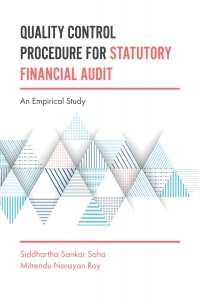Question
Background Information ABC Company is a forty year old manufacturing company that produces products to customers' specifications. ABC uses a job-order costing system to assign/allocate
Background Information
ABC Company is a forty year old manufacturing company that produces products to customers' specifications. ABC uses a job-order costing system to assign/allocate product costs to its jobs.
ABC company began before companies had access to computers and over the years, conditions within ABC have changed. For example, as a percentage of total costs, direct labor has been declining and manufacturing overhead has been increasing. Many of the tasks previously completed by direct laborers are now being performed by automated equipment which is considered a component of manufacturing overhead. Also, the company has begun creating new products that differ in volume and complexity. Managing and sustaining their product diversity has required the company to invest more money in manufacturing overhead resources such as production schedulers and product design engineers.
Current Information
ABC has three manufacturing departments: Fabricating, Machining, & Assembly
Historically, ABC has used one plant-wide predetermined overhead rate with its allocation base being "direct labor cost."Direct Labor Cost is the allocation base used to apply manufacturing overhead costs to their jobs in all three manufacturing departments - fabricating, machining, assembly.
Mr. Smith, president of ABC is very angry. He commented, "We have just lost another bid on the Fuller Job by $2000. It seems we are either biding too high to get the job or our bid is too low to make our desired profit. This has been happening frequently on certain jobs and management finds the variation in its product costs vs its competitors to be confusing. ABC has been losing more bids than usual on certain jobs because of its recent price increase. It is customary in this industry to bid jobs at 150% of total manufacturing costs. ABC does not think their prices are too high. They believe their competitors' prices are too low. For some particular jobs, they feel that their competitors must be pricing below their cost. However on other jobs that ABC bid on, they are winning more bids than usual.
Upon reviewing ABC's product costs, the president has concluded that the material and labor variances were reasonable and adequate. In other words, he did not find a problem with direct materials nor direct labor costs or usage.
In allocating overhead to jobs, ABC computes one single plant-wide predetermined overhead rate annually on the basis of direct labor costs. This has been the company's approach to the allocation of manufacturing overhead to its jobs for the past forty years. The president has indicated in the past that the company should not try to "reinvent the wheel."
ABC's overhead costs include various items, such as the plants manager's salary, depreciation of equipment, utilities, property taxes, insurance, production scheduler's salary, product design engineer's salary and rent. The company considers all of its manufacturing overhead costs to be fixed costs.
Data
The first set of data listed below is based on estimates from the beginning of the year used to calculate the single plant-wide overhead allocation rate used to allocate manufacturing overhead to individual jobs/products.
Estimated Manufacturing Overhead Costs
Fabricating$350,000
Machining.$400,000
Assembly$ 90,000
Total Plant$840,000
Estimated Direct Labor Costs (allocation base)
Fabricating.$200,000
Machining.$100,000
Assembly.$300,000
Total Plant.$600,000
Jobs require varying amounts of work in all of the three departments. The Machining Department is highly mechanized in a highly automated manufacturing environment. The Machining Department relies on the use of machines much more than on labor. The processes in the Assembly department are "labor intensive." As such, this department requires a large amount of labor hours for it to function.
Managers use job cost information to quote bids. The Fuller Job, for example, would have required manufacturing costs in all ofthe three departments as follows. The Fuller bid was based on the following estimated costs.
Fabricating Department
Direct Materials.$3000
Direct Labor$2800
Manufacturing Overhead$_________
Machining Department
Direct Materials.$200
Direct Labor$500
Manufacturing Overhead$__________
Assembly Department
Direct Materials$1400
Direct Labor Costs$6,200
Manufacturing Overhead costs $___________
Total Plant
Direct Materials$4600
Direct Labor Costs$9500
Manufacturing Overhead Costs $___________
Manufacturing Overhead is allocated to each job based on one plant-wide allocation rate.
Assume that it is customary in the industry to bid jobs at 150% of total Manufacturing Costs (direct materials, direct labor, and allocated manufacturing overhead).
The president of ABC, Mr. Smith, has recently hired a managerial accounting consultant with considerable relevant manufacturing experience and has asked him/her to assist in identifying, analyzing and finding a solution for the business problem. At this time, the managerial accountant has reviewed all of the relevant information and is ready to share his/her identification, analysis and solution with the president.
Section A:Identificationand understanding of the "Business Problem"
Section B:Analyzationof the scope, the underlying causes, and logical alternatives for the "Business Problem"
Section C:Solutionstrategy developed for the "Business Problem"
Step by Step Solution
There are 3 Steps involved in it
Step: 1

Get Instant Access to Expert-Tailored Solutions
See step-by-step solutions with expert insights and AI powered tools for academic success
Step: 2

Step: 3

Ace Your Homework with AI
Get the answers you need in no time with our AI-driven, step-by-step assistance
Get Started


